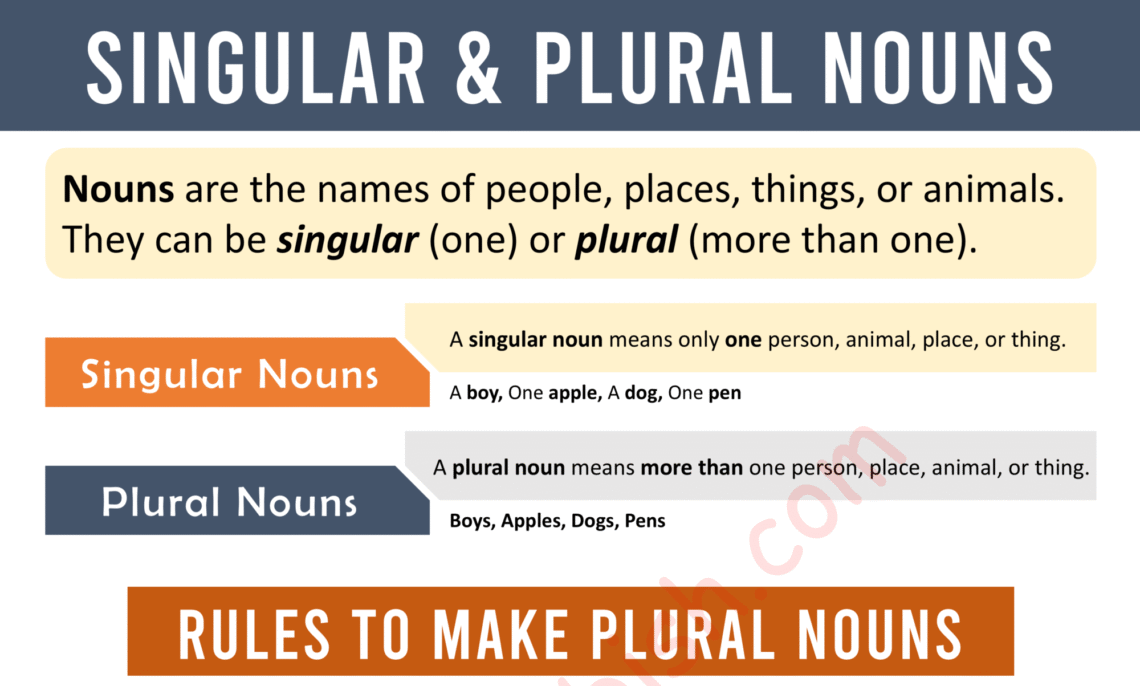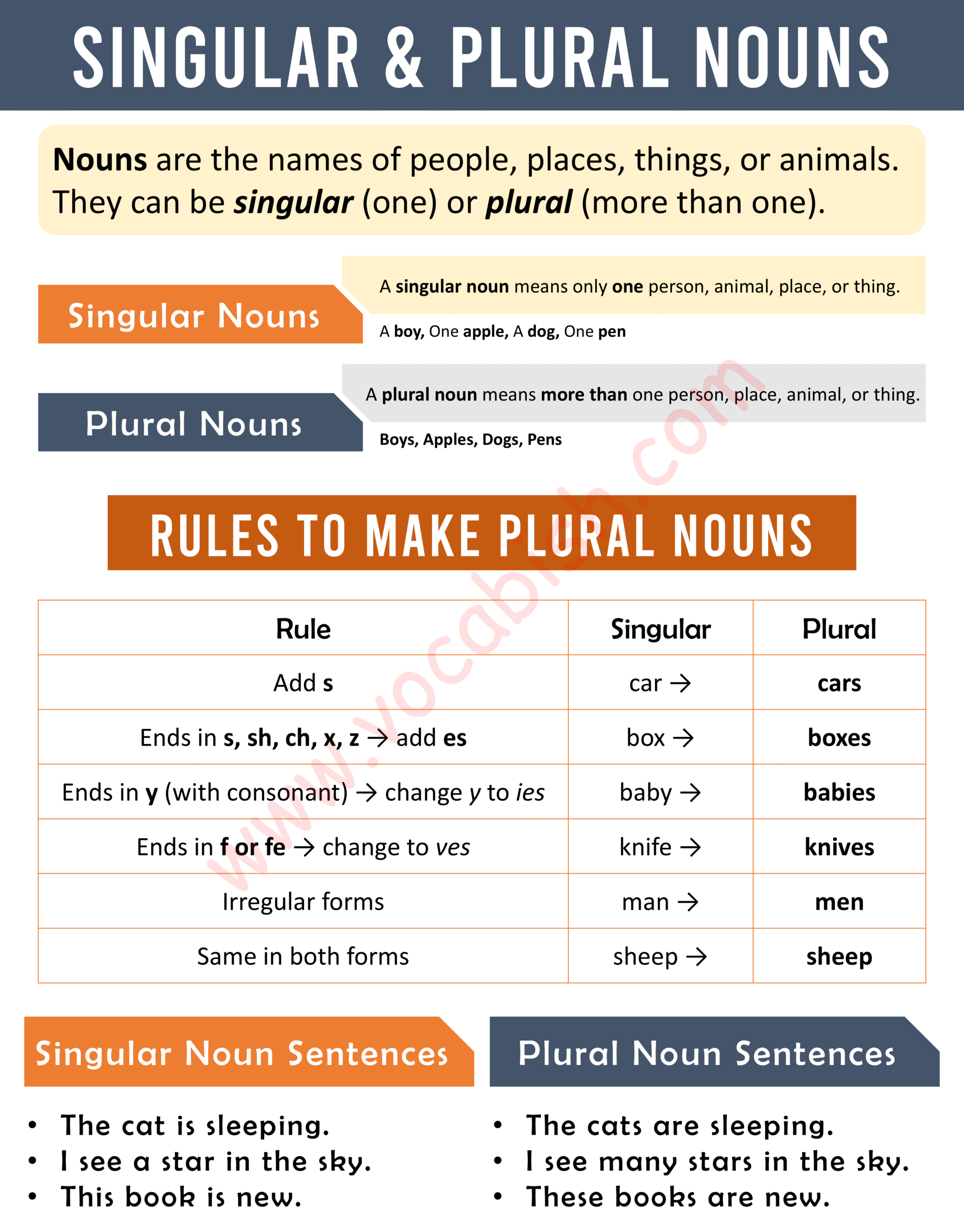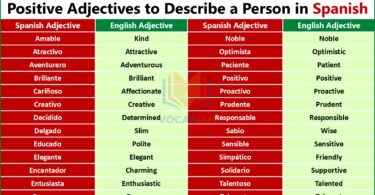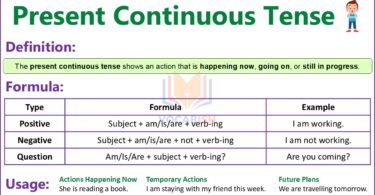Singular and plural nouns are the foundation of English grammar. A singular noun refers to one person, place, or thing, while a plural noun refers to more than one. Understanding these forms is essential for making correct sentences in both writing and speaking. In this blog post, you will learn the definition, rules, and 100 simple examples of singular and plural nouns explained in easy words, so every English learner can improve grammar and vocabulary with confidence.
What is a Singular Noun?
A singular noun means only one person, animal, place, or thing.
Examples:
- A boy
- One apple
- A dog
- One pen
What is a Plural Noun?
A plural noun means more than one person, place, animal, or thing.
Examples:
- Boys
- Apples
- Dogs
- Pens
Rules to Make Plural Nouns
| Rule | Singular | Plural |
|---|---|---|
| Add s | car → | cars |
| Ends in s, sh, ch, x, z → add es | box → | boxes |
| Ends in y (with consonant) → change y to ies | baby → | babies |
| Ends in f or fe → change to ves | knife → | knives |
| Irregular forms | man → | men |
| Same in both forms | sheep → | sheep |
Singular and Plural Noun Example Sentences
Singular Noun Example Sentences:
- The cat is sleeping.
- I see a star in the sky.
- This book is new.
- A child is playing outside.
- My friend is kind.
Plural Noun Example Sentences:
- The cats are sleeping.
- I see many stars in the sky.
- These books are new.
- The children are playing outside.
- My friends are kind.
Singular and Plural Noun Words
| Singular | Plural |
|---|---|
| Tree | Trees |
| Watch | Watches |
| Lady | Ladies |
| Foot | Feet |
| Mouse | Mice |
Tips to Remember
- Most words just add s to make plural.
- Some words change fully, like man → men.
- Practise daily to learn better.
Use singular and plural nouns in your daily sentences. It will help you speak and write English better.
FAQs about Singular and Plural Nouns
What is the difference between singular and plural nouns?
A singular noun refers to one person, place, or thing (book, cat), while a plural noun refers to more than one (books, cats).
What are 10 examples of singular and plural nouns?
Examples include dog → dogs, child → children, box → boxes, man → men, leaf → leaves, toy → toys, baby → babies, knife → knives, car → cars, mouse → mice.
What are the basic rules for forming plural nouns?
Most nouns add -s (book → books), nouns ending in -ch, -sh, -s, -x, -z add -es (box → boxes), and some have irregular plurals (child → children).
Can all singular nouns be changed to plural?
No, some nouns are uncountable (like milk, sugar, furniture), so they do not have a plural form.
Why is it important to learn singular and plural nouns with examples?
Learning singular and plural forms helps improve grammar, writing, and speaking skills by showing the correct number agreement in sentences.
Read More










